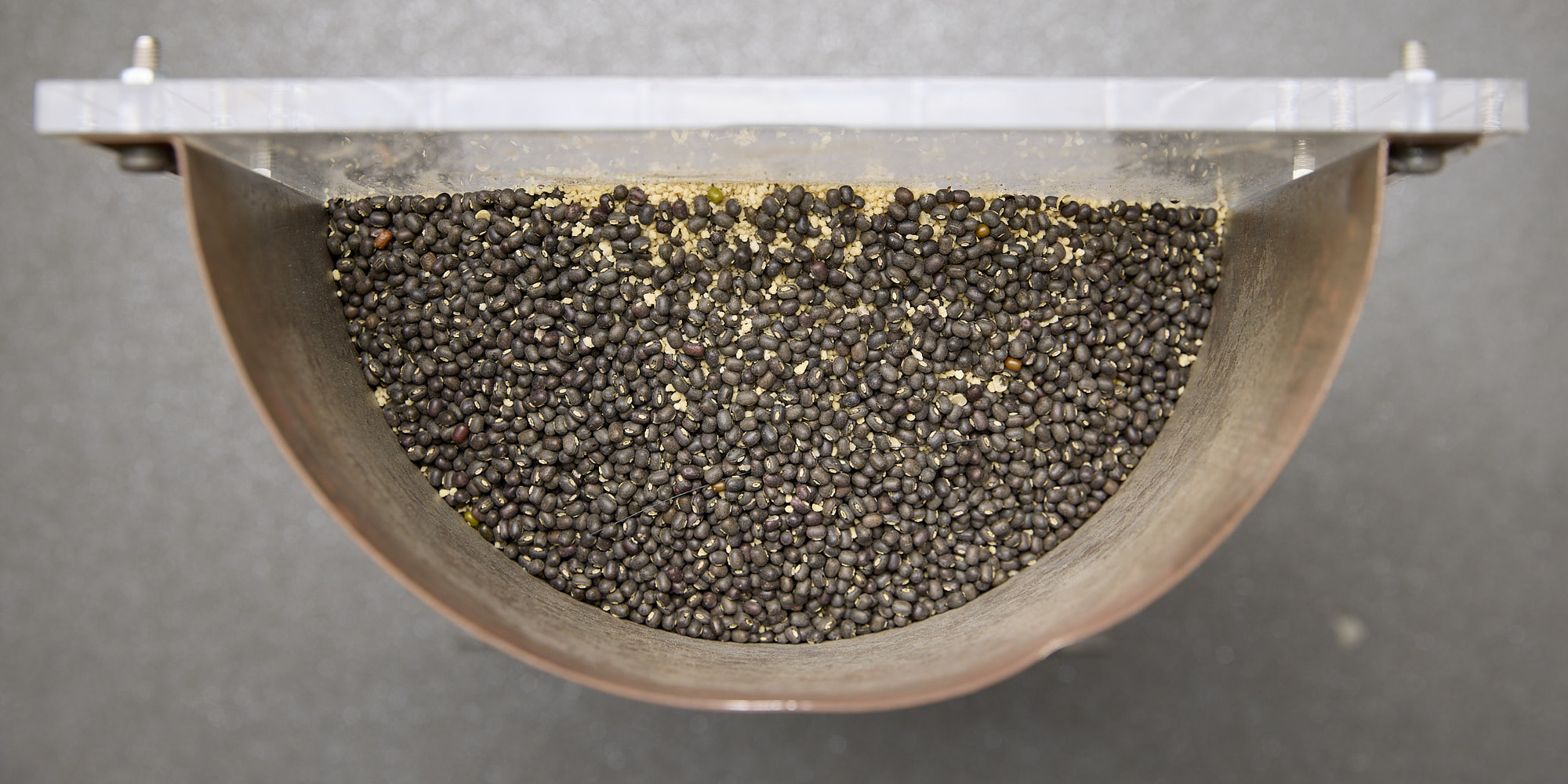Industries invest significantly into processes that engineer raw materials to create high value products. In many plants the quality of such materials can be compromised during transportation, silo filling and static storage.
Degradation
The nature of the mode of inter-plant transportation has a major influence over the likelihood of particle damage occurring. In mechanical systems (screws, drag-link conveyors, etc.) damage to particles mainly occurs when the bulk solid is sensitive to shear or a combination of shear and high stress. In contrast, pneumatic transfer systems tend to inflict impact damage on particles as they encounter bends in a pipeline. The resulting effects from either types of damage are dictated by the bulk properties and can range from 'smearing' and adhesion (ultimately leading jamming or blockage) or an increase in fines content within a size distribution which can contribute to flow problems and increased segregation effects.
Caking
Some materials are very sensitive to length of time that they are left in storage and can form lumps of solid material ranging in size from millimetres up to complete big bags! Similarly lump strength can range from weak enough to disassemble by hand pressure up to strength comparable to set concrete in some cases. The mechanisms behind lump formation are varied and it is not unusual for different mechanisms to act together. Sometimes useful improvement can be obtained by controlling the temperature of the bulk solid as it leaves the process and on other occasions a resolution exists in the redesign of storage equipment with the objective of either controlling the stresses acting on the stored bulk solid or, alternatively, using the storage vessel as means to 'condition' the bulk solid by effecting a slow removal of excess moisture (where this is primary driving force behind the problem).
Segregation
Where wide variations in size, density or shape occur within a bulk solid it is highly likely that a reduction in homogeneity will develop through handling and storage steps within a process. The mode of delivering material into a reception silo (pneumatic or mechanical) and the location at which material enters the reception vessel/silo will have strong influence over the severity of segregation that will occur as the material is deposited. In concert with the resulting deposition pattern (which will give a redistribution of the particles based on their properties), the discharge pattern that develops through the vessel will have the potential to either amplify segregation effects in the discharge stream (for core flow equipment) or mitigate such effects (if mass flow has been designed for).
All of the above issues can be assessed and engineered options designed to reduce the magnitude of such problems.
A video of the Segregation Tester in use
